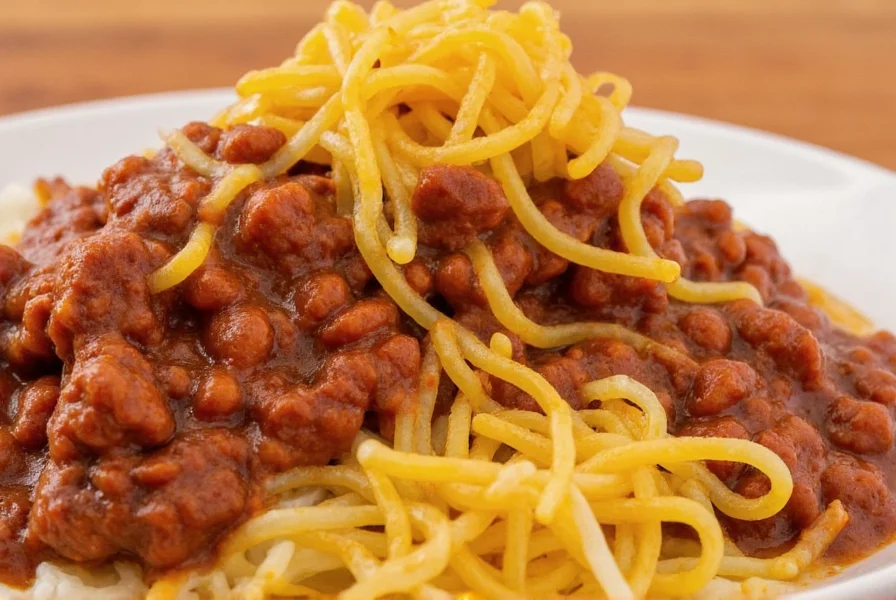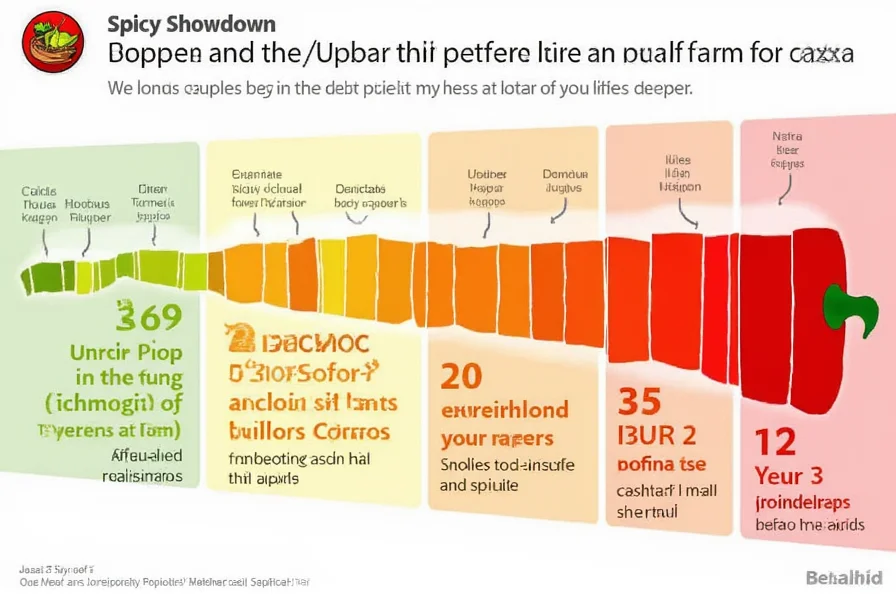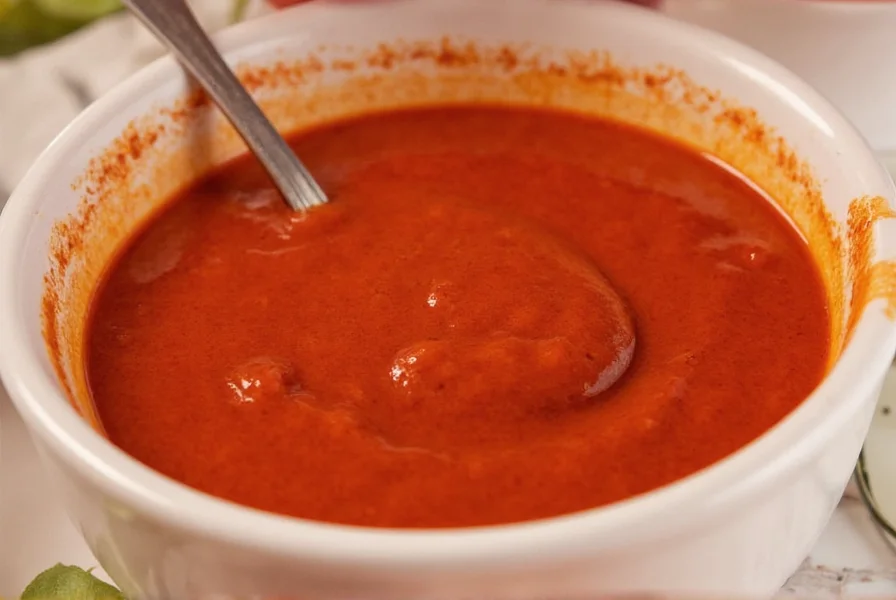Table of Contents
- What Is Harissa Sauce? (Quick Answer)
- North African Origins and Cultural Significance
- Harissa Flavor Profile: Beyond Just Heat
- Authentic Ingredients vs. Commercial Variations
- 10 Creative Ways to Use Harissa in Everyday Cooking
- Expert Buying Guide: How to Choose Authentic Harissa
- Harissa FAQs: Expert Answers to Common Questions
What Is Harissa Sauce? (Quick Answer)
Harissa sauce is a fiery red chili paste originating from Tunisia that serves as North Africa's answer to ketchup - a ubiquitous condiment deeply woven into the culinary fabric of Tunisia, Algeria, and Morocco. Unlike standard hot sauces, authentic harissa features a complex flavor profile combining roasted red peppers, garlic, olive oil, and warm spices like cumin and coriander into a thick, spreadable paste rather than a liquid sauce.
North African Origins and Cultural Significance
Understanding what is harissa sauce requires exploring its cultural roots. Created by Tunisia's indigenous Amazigh (Berber) people centuries ago, harissa was traditionally prepared by hand-grinding sun-dried chilies with garlic, olive oil, and spices using a mahras (mortar and pestle). The name "harissa" comes from the Arabic word "harasa," meaning "to break into pieces" or "to pound," reflecting its traditional preparation method.
In Tunisia, harissa isn't just a condiment - it's protected by law as a national heritage product, with the Tunisian government establishing the National Office of Harissa to preserve traditional production methods. Each Tunisian family typically has their own recipe variation, often passed down through generations.
Harissa Flavor Profile: Beyond Just Heat
While many search for what is harissa sauce, few understand its nuanced flavor dimensions. Authentic harissa delivers a sophisticated balance that goes far beyond simple heat:
- Heat Level: Medium-high (2,500-5,000 Scoville units), milder than habanero but hotter than jalapeño
- Smokiness: Comes from sun-dried or roasted Baklouti peppers (Tunisia's signature chili)
- Tanginess: Natural acidity from lemon juice or fermented preservation
- Savory Depth: Umami richness from garlic and slow-cooked spices
- Earthy Notes: Distinctive flavor from caraway or coriander in regional variations

Unlike generic hot sauces, harissa's magic lies in how these elements work together - the heat builds gradually rather than hitting all at once, allowing you to taste the complexity beneath the spice.
Authentic Ingredients vs. Commercial Variations
True understanding of what is harissa sauce requires knowing what separates authentic from mass-produced versions:
- Chili Peppers: Traditional Tunisian harissa uses Baklouti peppers, but most commercial versions substitute cheaper chilies like serrano or cayenne
- Garlic: Fresh garlic is essential - avoid products listing garlic powder
- Olive Oil: High-quality harissa uses extra virgin olive oil, not cheaper alternatives
- Spices: Authentic versions include coriander and caraway; avoid those with artificial flavors
- Preservatives: Traditional harissa uses salt and lemon for preservation, not chemical additives

Pro tip: Authentic Tunisian harissa should list only chilies, garlic, olive oil, salt, and spices - if you see xanthan gum, vinegar, or sugar among the first ingredients, it's a processed imitation.
10 Creative Ways to Use Harissa in Everyday Cooking
Now that you know what is harissa sauce, here's how to incorporate it beyond basic spreading:
- Breakfast Boost: Stir 1 tsp into scrambled eggs or avocado toast
- Marinade Magic: Combine with yogurt for chicken (24-hour minimum for best results)
- Roasted Veggie Enhancer: Toss carrots or cauliflower with harissa before roasting
- Cheese Pairing: Mix with soft goat cheese for a gourmet spread
- Cocktail Secret: Add 1/4 tsp to bloody mary mix for depth
- Pasta Revolution: Toss with olive oil, lemon zest, and shrimp
- Bean Transformation: Stir into hummus or white bean dip
- Bread Infusion: Swirl into dough before baking focaccia
- Soup Depth: Add to tomato or lentil soup for complexity
- Dessert Surprise: Pair with dark chocolate in mole-inspired sauces
Key technique: Always bloom harissa in oil first to unlock its full flavor potential - heat 1 tsp olive oil, add harissa, and cook for 60 seconds before incorporating into dishes.
Expert Buying Guide: How to Choose Authentic Harissa
Knowing what is harissa sauce means understanding how to select quality products:
| Feature | Authentic Harissa | Mass-Produced Imitation |
|---|---|---|
| Texture | Thick paste that holds shape | Runny, liquid consistency |
| Color | Vibrant deep red (from sun-dried chilies) | Bright orange-red (from fresh chilies) |
| Oil Separation | Natural olive oil layer on top (stir before use) | No separation (emulsifiers added) |
| First Ingredients | Chilies, garlic, olive oil | Water, vinegar, sugar |
| Shelf Life | 6-12 months unopened; 3-4 weeks refrigerated after opening | 18+ months (preservatives) |

Top Authentic Brands:
- El Bhadra (Tunisia): The gold standard - made with Baklouti peppers in Tunisia's Nabeul region
- La Tunisienne: Widely available export brand maintaining traditional methods
- Mina Harissa (Morocco): Regional variation with caraway instead of coriander
Red Flags: Avoid products with vinegar as an early ingredient (traditional harissa uses lemon), sugar (except in small amounts for balance), or xanthan gum (authentic versions rely on natural thickness).
Harissa FAQs: Expert Answers to Common Questions
What makes Tunisian harissa different from other chili pastes?
Authentic Tunisian harissa uses sun-dried Baklouti peppers (unique to Tunisia) combined with garlic, coriander, caraway, and olive oil. Unlike gochujang (Korean), sambal (Indonesian), or sriracha (Thai), it contains no sugar or vinegar, relying on natural fermentation for tanginess. The traditional preparation involves pounding ingredients by hand rather than blending, creating a distinctive texture.
How does harissa compare to berbere or zhug?
While all are chili-based condiments, harissa differs significantly: Berbere (Ethiopian) contains 16+ spices including fenugreek and is used dry; Zhug (Middle Eastern) features fresh herbs like cilantro and parsley. Harissa's distinctive elements are its sun-dried chili base, olive oil richness, and warm North African spices without fresh herbs.
Why does authentic harissa separate in the jar?
Natural separation of olive oil is a hallmark of authentic harissa - it indicates no emulsifiers or thickeners have been added. Simply stir before use. Commercial versions that don't separate likely contain xanthan gum or other stabilizers that compromise authenticity.
Can I substitute harissa in recipes calling for other chili pastes?
Yes, but with adjustments: Use 1:1 for gochujang but add 1 tsp sugar; For sriracha, use half the amount plus 1 tsp lemon juice; For chipotle, use 1:1 but add 1/4 tsp cumin. Remember harissa's unique flavor means substitutions will change the dish's character.
What's the difference between red and green harissa?
Red harissa uses mature red chilies (Baklouti or similar), while green harissa uses unripe chilies or jalapeños. Green versions are typically milder with grassier notes, while red offers deeper, smokier flavors. Traditional Tunisian harissa is always red - green variations are more common in Moroccan cooking.
How can I adjust harissa's heat level in recipes?
For milder flavor: Bloom in oil first to mellow the heat, then strain out chili solids. For more heat: Add harissa at the end of cooking rather than early. Pro tip: Mix with equal parts honey to create a balanced harissa syrup perfect for glazes.











 浙公网安备
33010002000092号
浙公网安备
33010002000092号 浙B2-20120091-4
浙B2-20120091-4